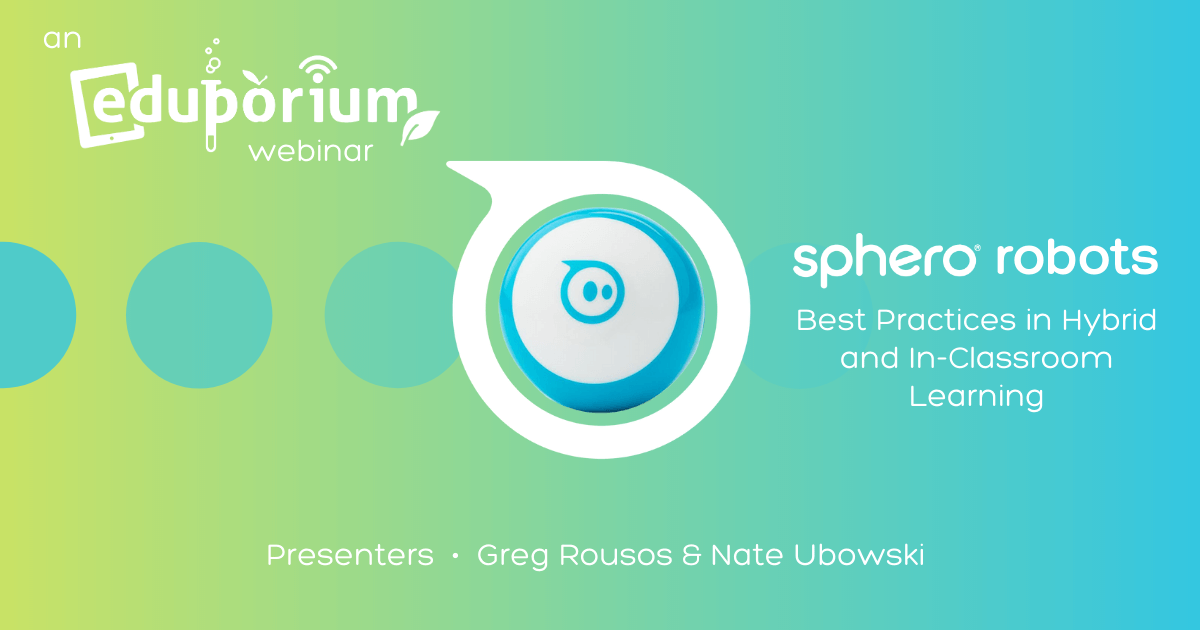Last December, in partnership with our friends from the Sphero Education team, we hosted a webinar on continuing STEAM instruction despite uncertain learning situations. Led by Nate Ubowski and Greg Rousos, the content focus was largely on suggestions for how teachers can use the Sphero BOLT, RVR, and Mini for robotics lessons in remote learning. Going beyond the 4 C’s to spark curiosity and create a greater sense of community improvement, the presenters also covered how the Sphero robots allow for efficient STEAM instruction. It's all made possible by their curriculum, lessons, and teacher-friendly content. If one of your STEM goals for 2021 is more robotics in remote instruction, the recording is a valuable resource.
The webinar was certainly well-attended by educators from all over the country and even some international educators. Besides talking about how the Sphero robots can be used in remote environments, including with some pre-created socially distanced STEM activities, Nate and Greg also spoke on the history of the company. It was great to hear what inspires them to create 21st century tools and learning experiences for students. What makes the Sphero line of STEAM solutions so great is that there’s essentially a robot for every student. Whether they’re new to coding or don’t have a lot of technology experience, have a bit of a computer science foundation, or they’re ready to take on more complex coding and engineering challenges, there’s an option for everyone.
Nate and Greg covered a lot in the webinar (above), but we’ll share some of the key points as well. The Sphero Mini is often the starting point for students and there are plenty of Sphero lesson ideas to use. It’s only the size of a golf ball and they can easily control it using different driving modes. Once they get more skilled, they can start creating programs using the Sphero Edu app. The BOLT is the next Sphero robot up and includes a clear shell so students can see its inner workings. This helps inspire them to ask questions as they pursue their natural curiosity. The BOLT has a programmable 8x8 LED matrix beneath its shell. This enables students to create programs that display any type of message they’d like. They can program it using Draw mode, Block mode (with Scratch blocks), or Text mode with Javascript.
Finally, we have the Sphero RVR, which is an all-terrain robot for older students (mostly high school). It’s also compatible with third-party hardware, like the micro:bit, Raspberry Pi, and Arduino, and is built to allow for expansion as students engineer objects for attaching. It’s compatible with the Sphero Edu app as well and features numerous sensors to allow for the creation of extremely accurate programs. The same coding opportunities are possible (Draw, Block, and Text) and the RVR helps create a plethora of programming possibilities. If you have any questions about the Sphero robots, please feel free to contact our team. Also, don’t forget to check out the webinar recording and follow us on Twitter and Instagram as well!



